

Advertise Here
Data from the Ministry of Finance show that outstanding stock of domestic debt at end-December 2023 stood at US$22 billion (GH¢257.2 billion). This was partly due to increase in net domestic financing to support the 2023 budget and the DDEP resulting from capitalised accrued interest, capitalised interest payment in kind, and an increase in the exchange ratio (1.00:1.15) for the pension funds alternative offer. This domestic debt portfolio includes Ghana’s Local US Dollar Bond. he face value of outstanding government local US Dollar bonds was US$791.7 million at end of December 2023.
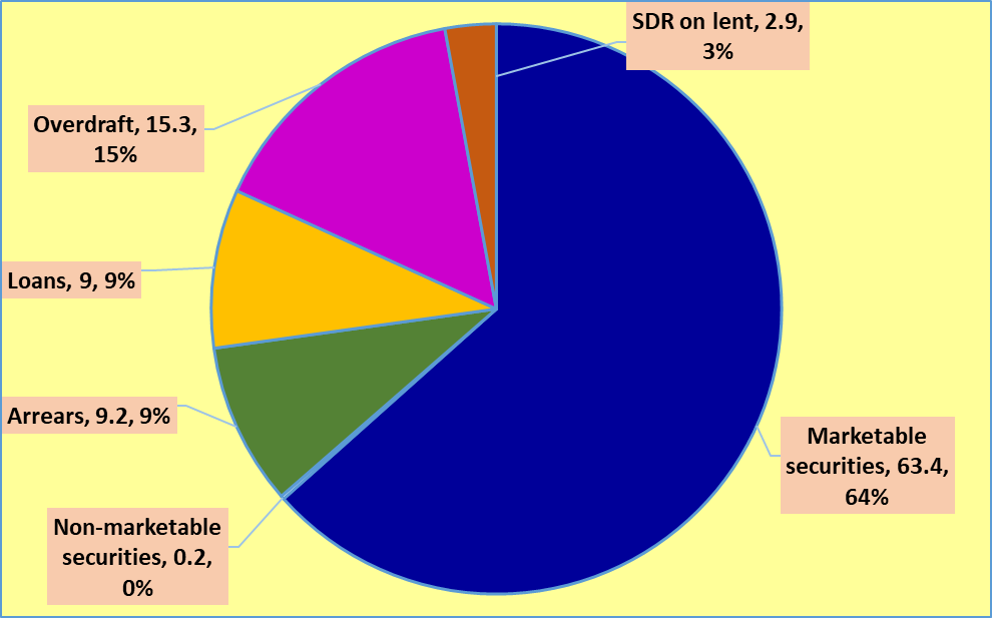
Source: IMF, 2024
Ghana implemented a comprehensive domestic debt echange program (DDEP) in 2022-2023. The restructuring perimeter encompassed medium-term debt in local currency (government T-bonds as well as debt issued by ESLA and Daakye), government bonds in USD, Cocobills issued by Cocobod and non-marketable debt held by the Bank of Ghana. securities and bond holders received improved terms against longer maturities but the types of securities and holdings remained unchanged. The IMF estimates that the domestic debt restructuring has generated about US$ 8 billion of debt service savings over 2023-26; and lower the present value of overall public debt to GDP by 9 percentage points in 2028.
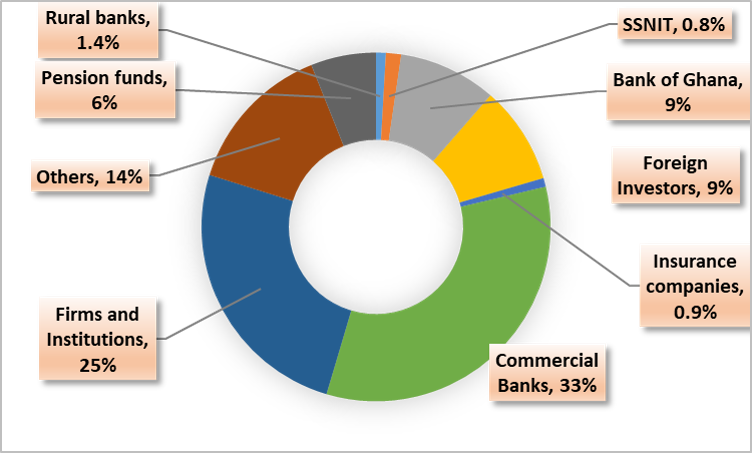
Source: IMF, 2024
In March 2024 Ghana's short term rates rose to reflect rate hikes, while long-term rates fell as inflation expectations become more moderate. In March 2025, the yield curve became normal and upward sloping, from left to right, indicating higher yields on longer maturity bonds. Typically, the normal curve emerge before economic expansion and growth. Investors demand higher yields on longer-term bonds as compensation for inflation and future rate rises.
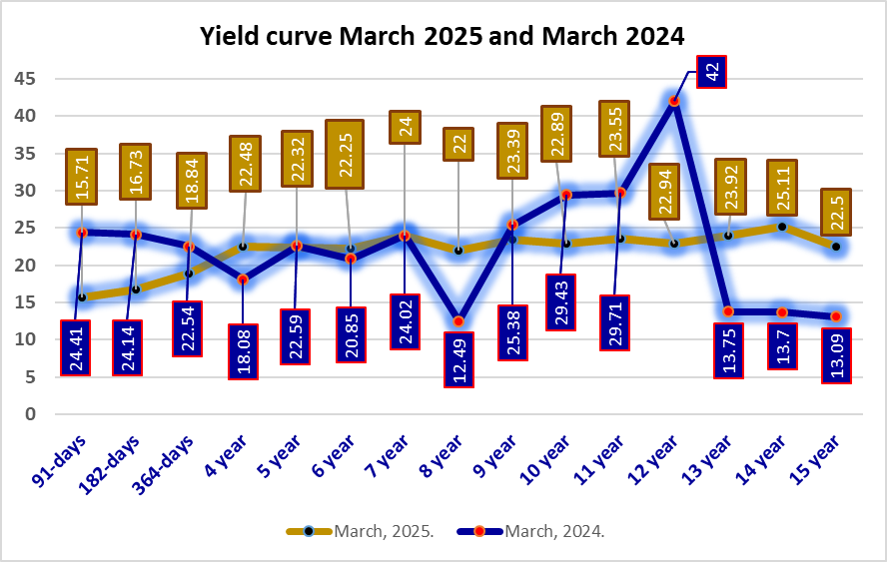
Source: Ghana Stock Exchange, 2024-2025
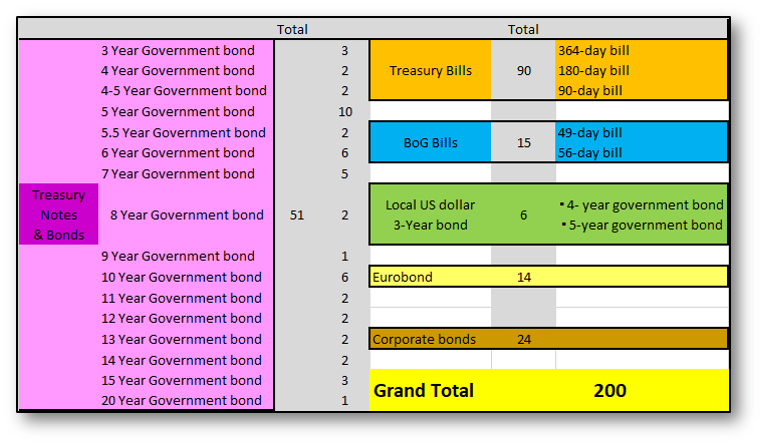
Source: Ghana Stock Exchange March 2025
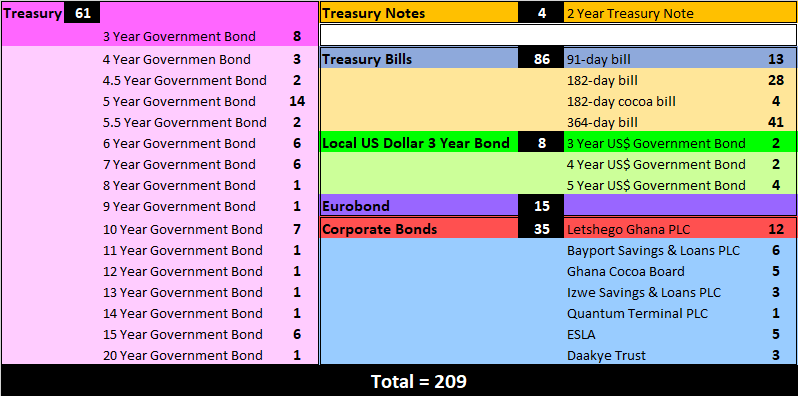
Source: Ministry of Finance, December 2023